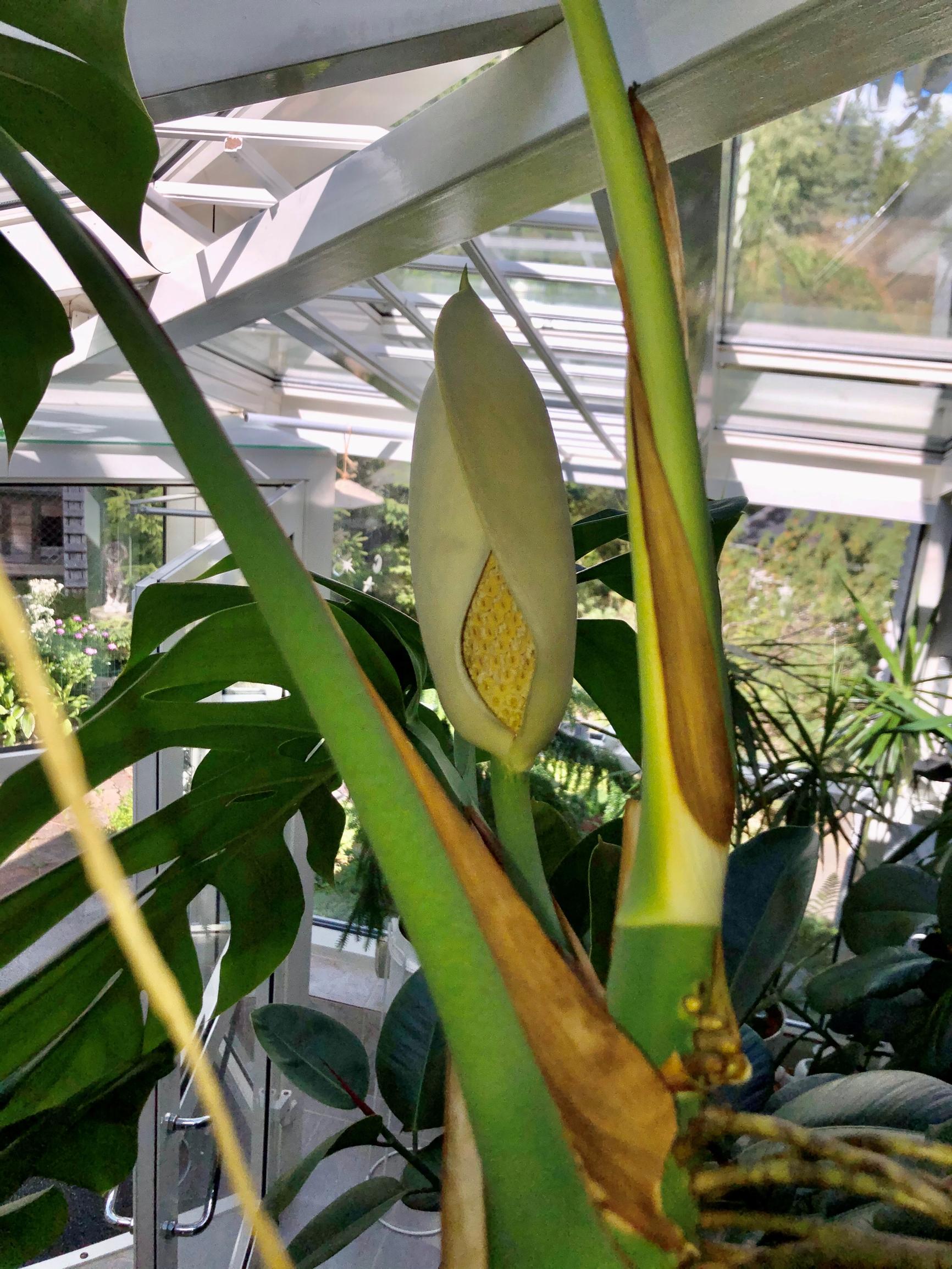
What in the world—Aune’s monstera grew strange “slipper”!
When Aune Paakkunainen took a cutting from her aunt’s old monstera in 2014, she never would have guessed it would bloom one day. In fall 2020, the inflorescence that appeared on the plant began forming a fruit—something rarely seen at home.
Aune, your monstera just developed a fruit bud. How did you notice it?
In August 2020, we had just returned home from our summer cabin when I noticed something while watering my plants. The monstera had one strange, nearly 12-centimeter-long white leaf on its upper branch that looked like a slipper. About three weeks later, the white leaf began to open. Then it dried up and finally fell off. Underneath, I found a dark green “lump” covered in pollen, which looked a bit like a pineapple.
I posted a photo of the lump on Facebook, and a friend recognized it as a fruit. I also contacted Botania, a botanical garden, to ask what I should do. They advised me to keep caring for it as usual. We’ll see if it ripens once the spring sun starts shining.
I heard that the raw fruit is toxic [in Finnish], but after a year of ripening, it can be eaten. I’m still not entirely sure I’ll dare to taste it. If it looks juicy, maybe I’ll try a small slice.

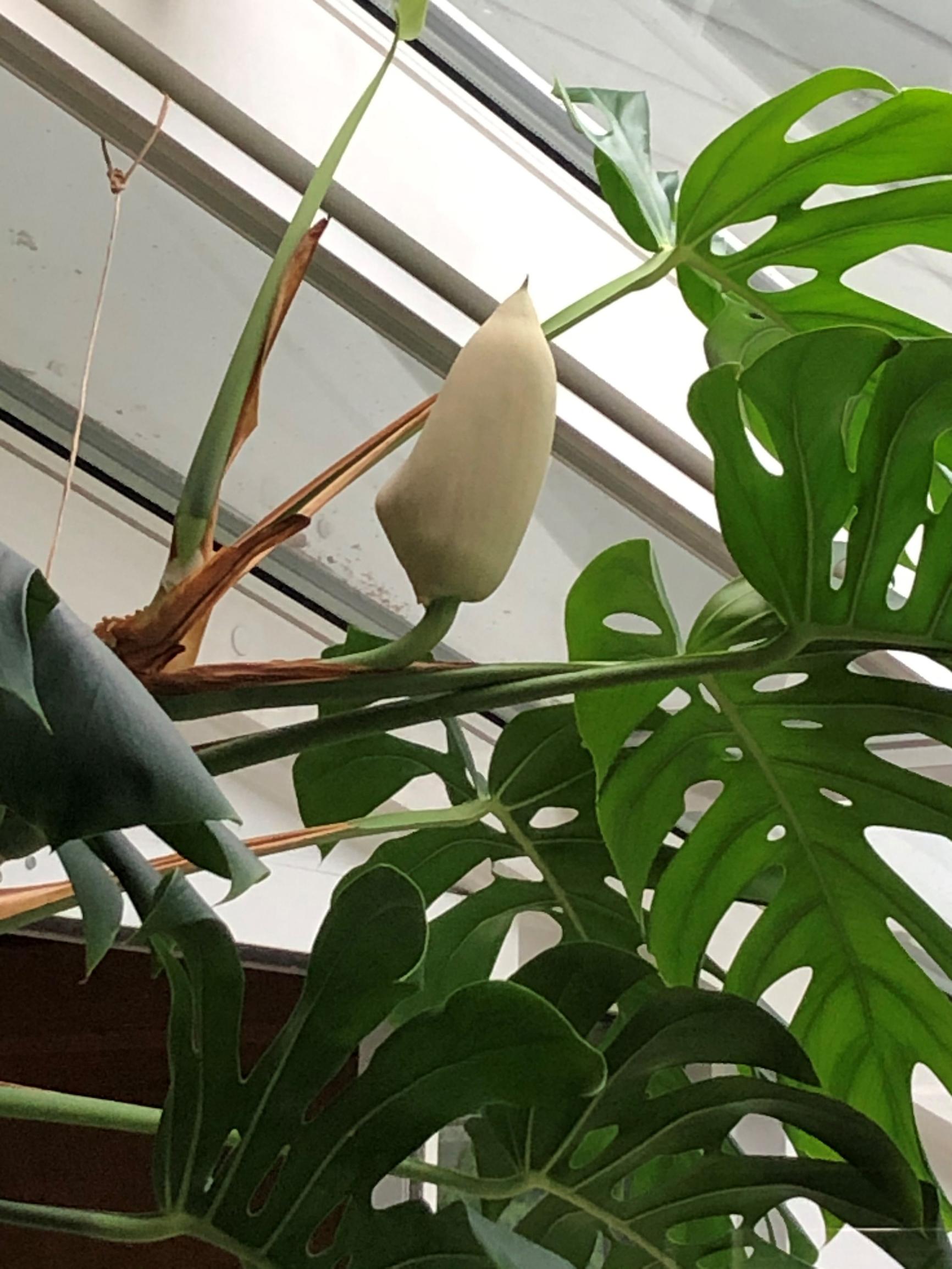

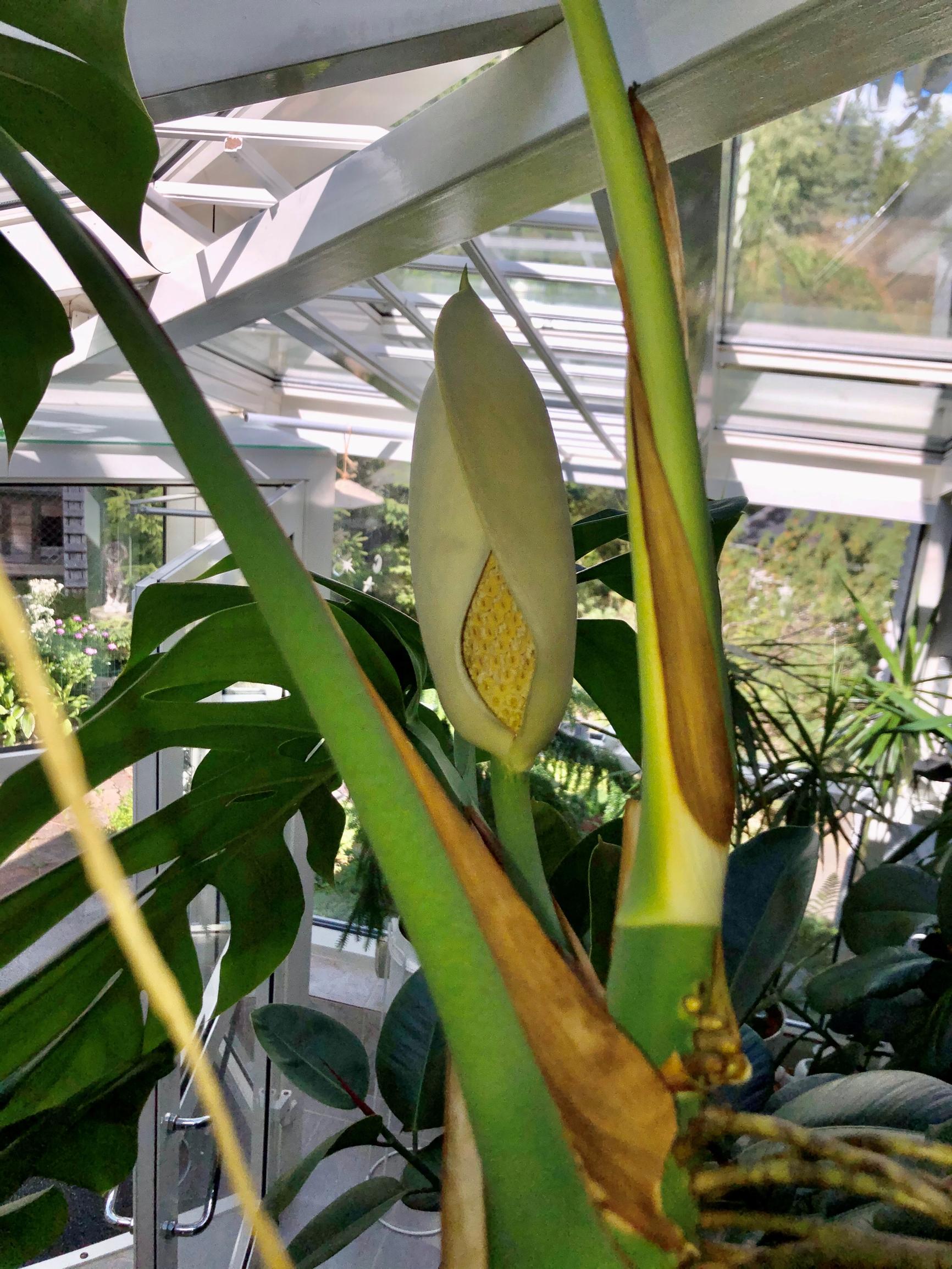



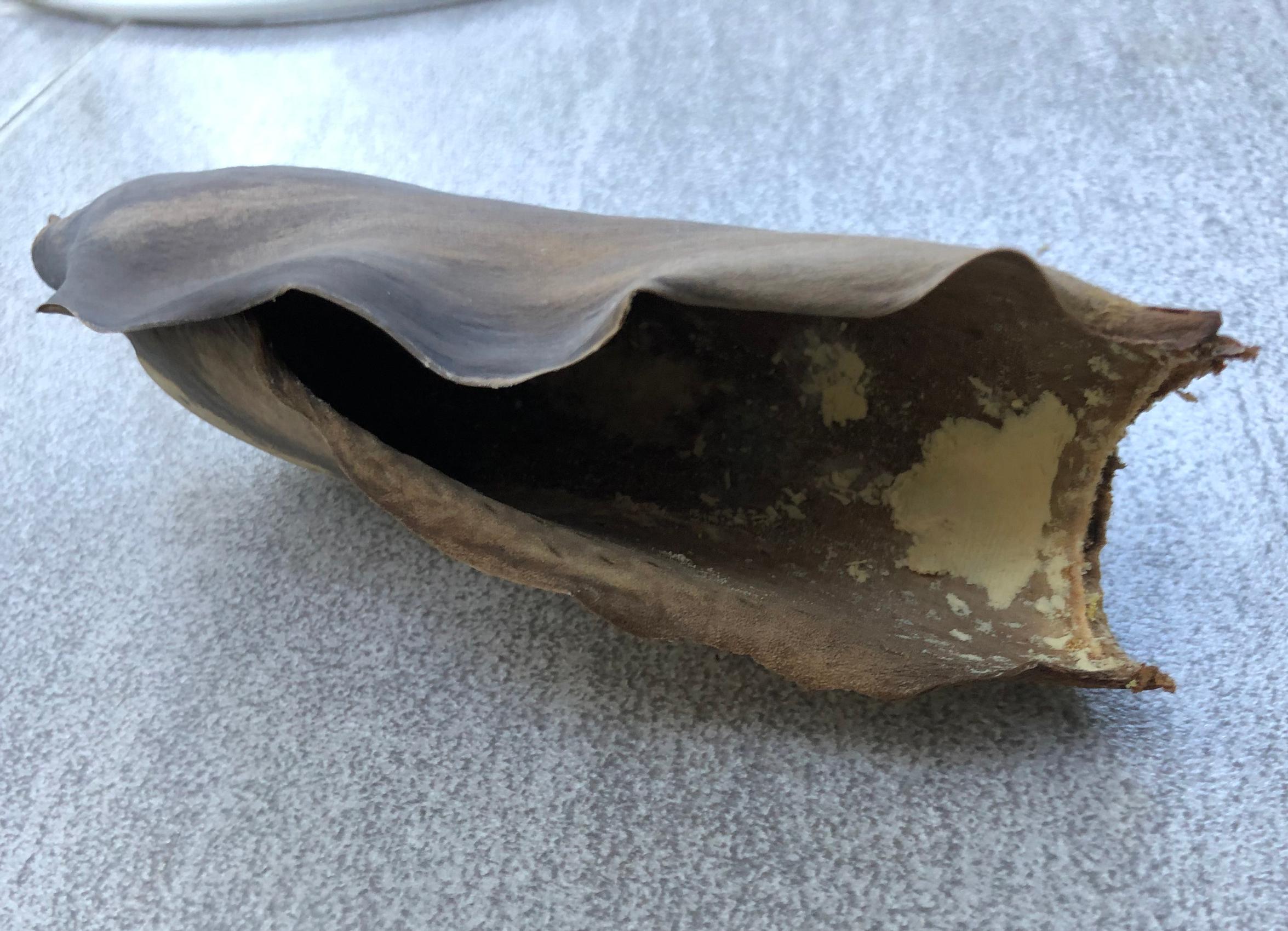
How old is your monstera?
It’s turning 60 this fall. My aunt bought the monstera in August 1961 to celebrate the birth of her second child, and the plant later moved with her to an assisted living facility. In 2014, her daughter—my cousin—asked if I wanted the monstera. Over time, it got so large that it barely fit in my home, so I took two cuttings and put them in a vase, then offered the plant to a local restaurant as décor. The one that eventually produced fruit grew from one of those cuttings.
When the restaurant recently closed, I asked if I could have the monstera back. Now it grows next to the fruit-bearing monstera. I welcomed it home and told it to follow its sibling’s example! My cousin mentioned that it never bloomed while my aunt had it.
How do you get a monstera fruit to ripen? We asked botanist Visa Lipponen:
“A monstera will flower easily in greenhouses with high humidity, but it rarely blooms as a houseplant. Of course, the plant’s size matters, too—you won’t see it bloom when it’s small.
A monstera is toxic because it contains a large amount of oxalic acid—the same substance found in wood sorrel and rhubarb. All of its parts also have countless microscopic needle-like calcium oxalate crystals that damage the mouth, tongue, and throat and may cause internal damage to the digestive system. They will feel like tiny needles whenever you chew.
The monstera’s “flower” is actually an inflorescence, made up of a spadix with numerous tiny blossoms, surrounded by a large white spathe. Botanically, the fruit is a multiple fruit that develops on the spadix and consists of many closely attached small berries, each with a hexagonal outer surface.
It takes about a year or longer for the fruit to ripen. While ripening, the green fruit may or may not change color—it might lighten slightly. You’ll know it’s ripe when the lowest berries start to separate. Then, you cut the fruit off and place it on a plate to finish ripening.
The whole fruit doesn’t ripen at once; it does so gradually from the base upward over a few days. The thick outer layer of the ripe part either falls off by itself or can be gently removed by hand. That layer is green on top and white underneath, and it’s not edible. Under it is a structure resembling an ear of corn, with white pulp on top, which is the only edible portion. Below the pulp is a hard, woody core you can’t eat.
Monstera fruit tastes like a mix of pineapple, banana, and strawberry.
The pulp separates easily from the core, and you can collect it with a fork. You might see some black remnants of wilted blossoms. They’re safe to eat, but they contain some needle-like calcium oxalate crystals that cause a prickling sensation, so it’s best to remove them.
Only the fully ripe pulp is safe to eat—the part of the fruit whose outer layer comes off easily. If the outer layer doesn’t detach in some spot, the pulp beneath it isn’t ready. Unripe pulp contains a high level of oxalic acid, which makes it unhealthy and very bitter, but as the pulp ripens, its oxalic acid content goes down, though not completely.
I haven’t had the chance to taste monstera fruit myself. Those who have tasted it say it reminds them of pineapple, banana, and strawberry.”


Where is your monstera located, Aune?
It’s in a roughly nine-square-meter conservatory with insulated glass walls and roof, so it gets plenty of light. It faces southwest, but tall trees in our yard shield it so it doesn’t get scorched in the midday sun.

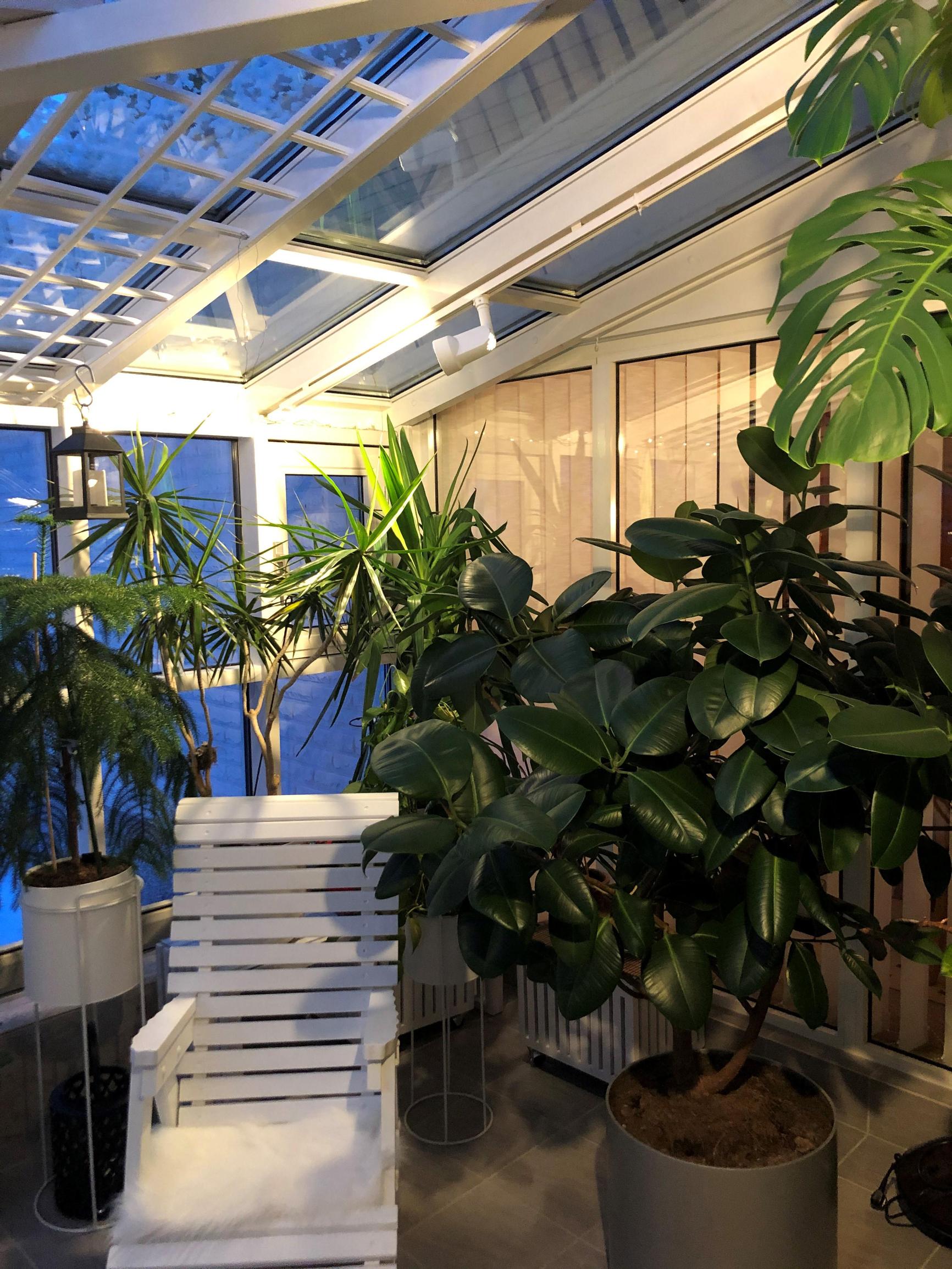
How do you care for your monstera?
I water it thoroughly once a week or every ten days, letting the soil dry out in between. Sometimes I add seaweed extract to the water. In spring, I start fertilizing regularly, using both summer flower and indoor plant fertilizer.
In the summer, we spend long stretches at our cottage, so I have a watering system with a reservoir and tubes leading to each plant. The pots have ceramic sensors that measure moisture and dispense water when the soil is dry. My neighbor refills the 30-liter reservoir every week or two.
We also have a humidifier in the conservatory. I suspect that this, along with the ample light, is one reason the monstera has done so well—dry indoor air often kills houseplants.
How do you care for it in winter? Do you use grow lights?
When the conservatory’s temperature drops to around 12–13 degrees Celsius, I turn on an extra heater. I don’t use grow lights at all. We do have a few bright LED spotlights on the ceiling, but they’re rarely switched on. The plants only really get natural light.

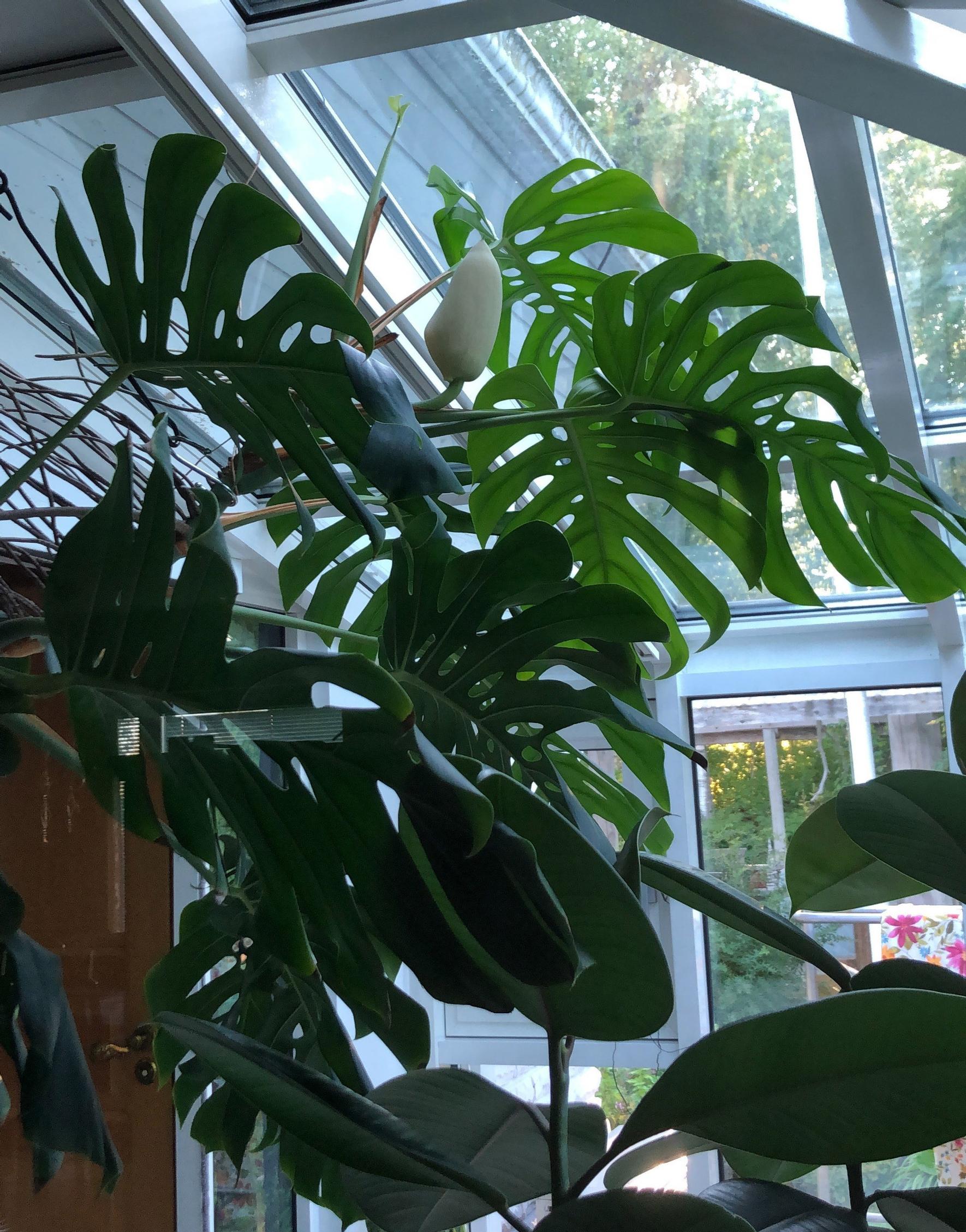
How often do you repot it?
This is probably its third pot. It’s about 60 centimeters tall and around 40 centimeters in diameter. It’s starting to feel cramped, but I decided not to repot it until I see what happens with the fruit.
Because the plant is so big, I’ll need a friend to help me with repotting. I place broken pieces of clay pot on the bottom and add expanded clay for drainage. I use regular houseplant soil, which I soak before replanting.
How has growing your monstera been?
It’s been very easy. The only challenge is space—I’m not sure where to put it if it keeps growing. It’s about three meters high right now. I’ve gently tied it horizontally to the ceiling for a little over a meter and propped it up with sturdy supports. The pot has wheels, so I can move it if needed.

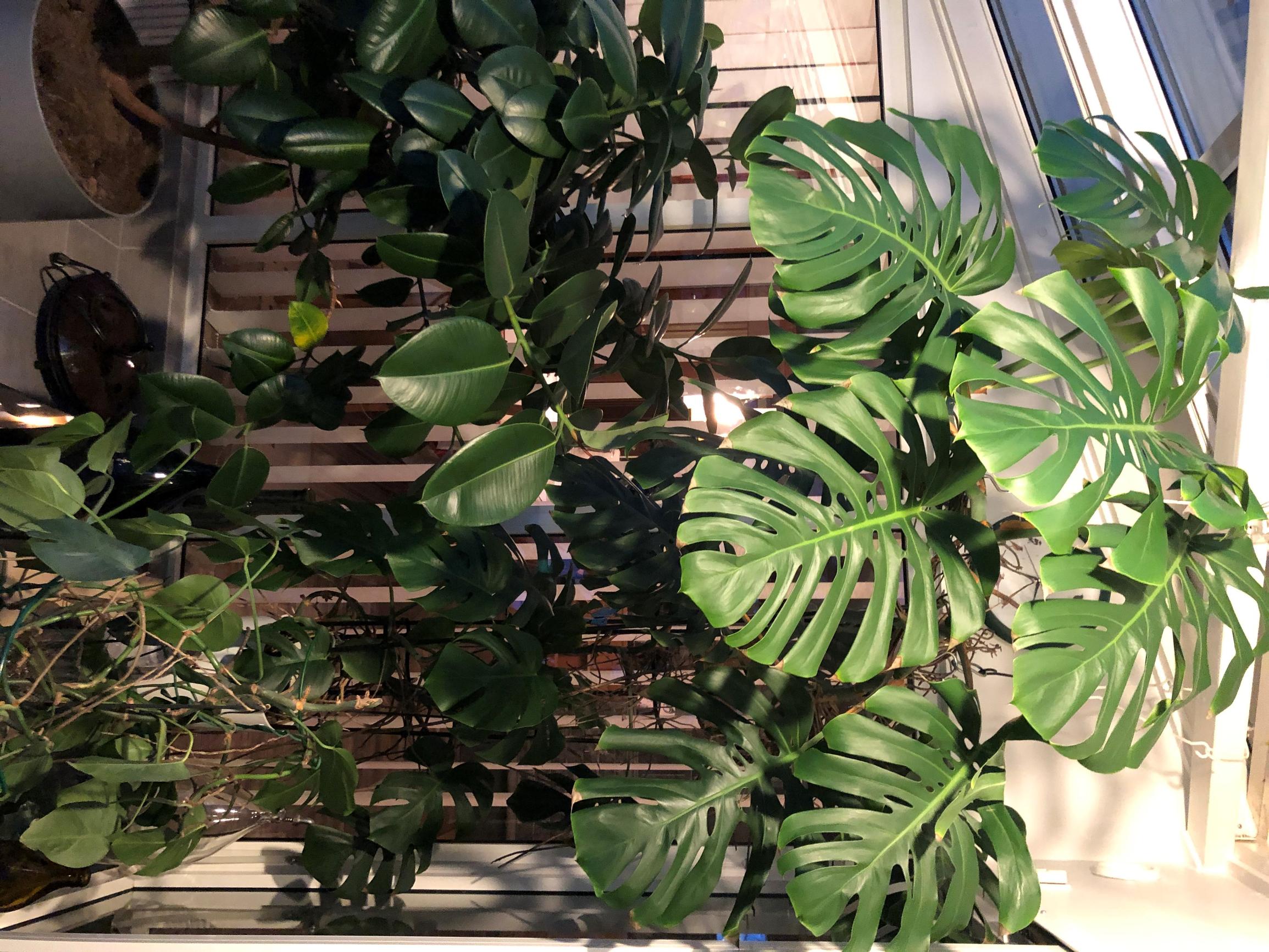
Do you prune your monstera?
I haven’t really pruned this blooming one, but I have taken a few leaf cuttings for a vase. It has plenty of aerial roots, some up to two meters long, but I haven’t touched them, even though they aren’t the prettiest.
The monstera from the restaurant was roughly five or six meters long. When I picked it up, I trimmed it back to about two or three meters, then removed any dried parts at home.
“Whenever I tend to my houseplants, I think of the people who gave them to me.”
What kind of houseplant owner are you?
I wouldn’t call myself a very enthusiastic grower. I like plants that can get large and don’t require much. I’ve never really managed to grow flowering plants, and my garden is pretty bare. During my busy working years, I took struggling plants to my mom so she could revive them. Now that I’m retired, I have more time, and the plants have improved. Besides the monsteras, I have a big Ficus, a yucca, a spurge, a few snake plants, and four aloes in our conservatory.
What does this monstera mean to you?
It’s very special to me because it reminds me of my late aunt and cousin. It has a story, like many of my other houseplants. Whenever I care for them, I think of the people who gave them to me. My monsteras have been with me the longest, so I’d hate to ever part with them.


